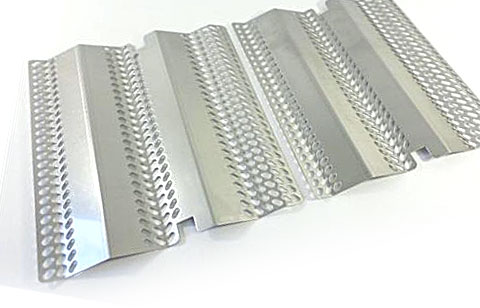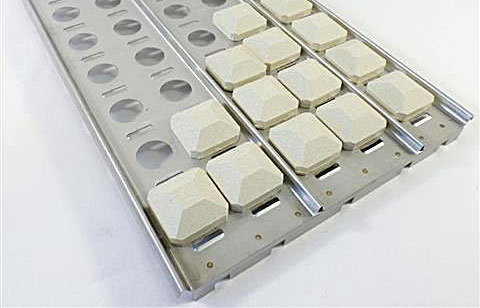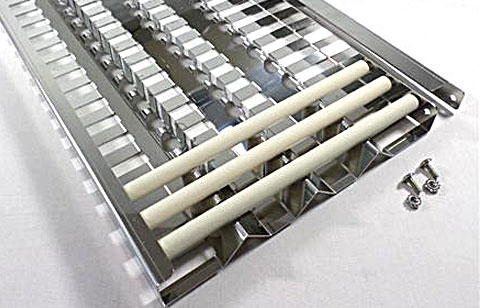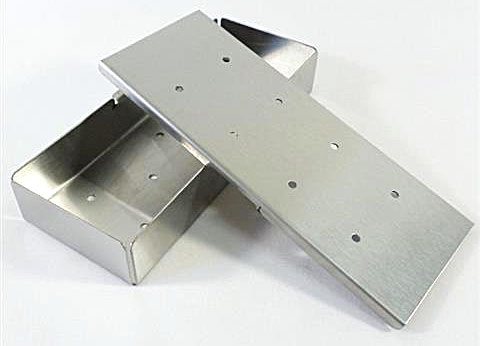Gas Grill Heat Shield/Radiants Types and Care
Heat Distribution Plates & "Flavorizer Bars"

Some heat tents have been engineered to vaporize food drippings.

Stainless steel carrier holding ceramic briquettes.

DCS ceramic rods in a stainless steel radiant tray

Want more flavor and smoke? Try a Smoke Box filled with your favorite wood chips
Gimme Smoke!
They’re crafted from materials like aluminized steel, stainless steel, porcelain-coated steel, or cast iron. These plates work their magic by concentrating heat more efficiently than lava rocks or briquettes, meaning you can dial down the control settings. Plus, on some models they’ve got holes or slots that let heat rise evenly while vaporizing those delicious food drippings.
Ceramic Briquettes
Imagine self-cleaning magic in the world of grilling. These ceramic briquettes come in various shapes and sizes, from cones to pyramids. The heat from the burner flame keeps them spick and span. The uniform shape and size of these briquettes ensure top-notch heat distribution. They’re like the precision tools of grilling. Some are sold in a kit form that contains a stainless steel carrier along with briquettes.
Ceramic Rods in Radiant Tray
Primarily used in DCS (Dynamic Cooking Systems) Grills, Ceramic rods produce very even heat and flavor infusion under the grilling surface. The rods are tucked inside the radiant tray, which help provide ultimate protection for your burners. Over time the rods can become brittle and break, but are easy to replace and are in stock at Grillparts.com.
Lava Rock and Pumice Stone
Although we do not carry pumice stone or lava rock at Grillparts.com, they are worth a mention here because of overall popularity.
Lava Rock is a classic choice for older grill and a budget friendly option. These lightweight lava rocks heat up in a flash and distribute heat pretty well. But here’s the thing – they’re super porous, which means they can get greasy and messy. You’ve got to change them yearly or when they’ve soaked up too much grease. If you neglect them, they might just catch fire and give you an out-of-control cooking experience – not the kind of fireworks you want at your grill party!
Pumice Stone: Here’s a rock with a twist – similar to lava rock but with a smoother surface and slightly higher cost. The less porous surface means it gets a thorough bake-off, resulting in fewer flare-ups. It’s like the lava rock’s classy cousin at the barbecue.
So, there you have it – radiants - your gas grill’s secret sauce for flavor and even cooking.
Always refer to your owners manual. The information provided is not intended to take the place of the owners manual that was supplied with your grill. Specific safety, repair and maintenance information varies between grill models and brands.